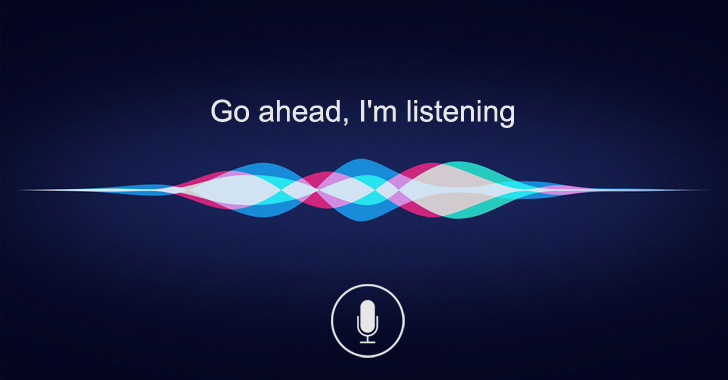In the relentless churn of the digital age, where data flows ceaselessly and screens flicker with ever more captivating visuals, there emerges an often-overlooked dimension of human
interaction – the voice.
Voice technology offers a personable and parasocial tool for businesses to forge deeper connections with the consumers and create a level of intimacy that speaks for itself. With experts suggesting a rise from 6 to 8 billion active voice assistants worldwide in 2023, it’s safe to say consumers are embracing this era of instant information at our fingertips. Alongside this, their demands and preferences have undergone a transformation. With 79% of people listening to podcasts on a weekly basis, content is moving away from what we see, to what we hear.
What is Voice Technology?
Before delving deeper into the profound impact of voice technology, it’s essential to clarify what exactly voice technology means. Voice technology represents a category of digital tools and systems designed to recognize and process spoken language, facilitating human-machine interaction through voice commands. It encompasses a wide spectrum of applications, from speech recognition systems like Amazon’s Alexa and Apple’s Siri to text-to-speech (TTS) technology that converts written text into lifelike spoken words.
Voice technology has come a long way since its inception, evolving from rudimentary voice commands to sophisticated natural language processing capabilities. Today, it empowers individuals to communicate with devices, access information, and execute tasks using nothing but the power of their voice. As we explore its evolution and impact in the digital age, it becomes evident that voice technology is reshaping the way we interact with technology, media, and brands, ushering in a new era of auditory engagement and personalization.
The Psychology of the Voice
Traditionally, the maxim “a picture is worth a thousand words” held sway, emphasising the supremacy of visuals in capturing and retaining audience attention.
Consider the phenomenon of lip-syncing videos on TikTok, where users synchronise their lip movements with pre-recorded audio tracks from songs, movies, or viral internet trends. Beyond the visual spectacle, the incorporation of voice technology taps into our deep-seated instinct for imitation and social connection. We are naturally drawn to emulate and engage with others, and the voice serves as a powerful medium for fostering this connection.
TikTok’s ‘text to voice’ function amplifies inclusivity and accessibility by transforming text-based content into spoken words. This feature acknowledges the diversity of its user base and underscores the psychological comfort we find in hearing information conveyed verbally. The spoken word carries nuances of tone and inflection that transcend the limitations of text, enhancing our capacity to empathise and engage.
And the profound psychological impact of voice technology isn’t only confined to TikTok. In our homes, voice-activated virtual assistants like Amazon’s Alexa have become indispensable companions. Their capacity for hands-free control of smart devices and access to information taps into our innate desire for convenience and efficiency. We find solace in the idea that our environment can be shaped simply by the utterance of our desires.
Consider a homeowner returning on a scorching summer day and instructing, “Alexa, lower the temperature to 72 degrees.” In this simple command, voice technology becomes the conduit for realising our desires, aligning with our psychological need for control and comfort in our surroundings.
The Rise of Voice Technology
Voice technology, once confined to the realms of science fiction, has now solidified its presence in our daily lives since the 2010s. Names like Amazon’s Alexa and Apple’s Siri are now woven into the fabric of our daily routines, providing us with access to our messages, calendar, and contacts without having to move a muscle. Voice technology is rapidly gaining momentum, emerging as a pivotal player in the digital landscape. The proliferation of voice-activated smart speakers and virtual assistants has acclimated consumers to engage with technology through the utterance of their desires. This trend, it seems, is poised for further expansion, with voice anticipated to become the primary conduit of communication between humans and machines.
A remarkable stride in the domain of voice technology has been the capacity of artificial intelligence systems to replicate human voices. Advanced models, including text-to-speech (TTS) systems, have harnessed the capability to generate voices that are startlingly realistic and natural. Brands now have the privilege of tailoring these voices to establish a consistent brand identity, heretofore an unprecedented feat.
The Impact on Branding and Marketing
What implications does this voice technology revolution hold for brands and marketers?
Brands have begun to comprehend the significance of possessing a distinct and relatable voice. Just as a brand meticulously crafts its visual elements, including logos and colour schemes, it must devote equal attention to its voice – both in written and spoken form. This voice can be harnessed in a multitude of contexts, from marketing materials and website interfaces to customer service interactions and audio advertisements.
Moreover, the ascendance of voice technology has unlocked novel pathways for personalised marketing. Picture a scenario where you receive a voice message from your favourite brand, delivered in a tone and style that resonates deeply with your preferences. This level of personalization transcends engagement; it fashions a profound emotional bond between consumers and brands.
The Future of Voice Technology
Looking ahead, the future of voice technology is poised for exciting developments. As artificialintelligence advances further, we can anticipate voices that are not only eerily realistic but also imbued with nuanced expressions. Natural language processing will witness heightened sophistication, endowing virtual assistants with the capacity for more profound and nuanced interactions.
In conclusion, the burgeoning power of the voice in our contemporary digital panorama is a force to be reckoned with. It has redefined the manner in which we engage with content and technology. Brands that astutely harness the potential of voice technology to form authentic connections with their audiences will not only remain relevant but will also flourish in this perpetually evolving digital age. The voice is no longer just a medium of communication; it is the very pulse of human connection in an increasingly digitised world, and its resonance is bound to grow louder in the years to come.

